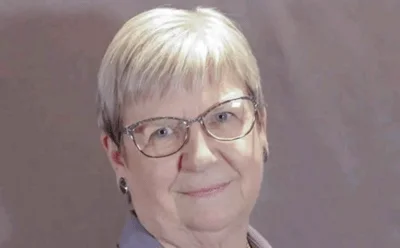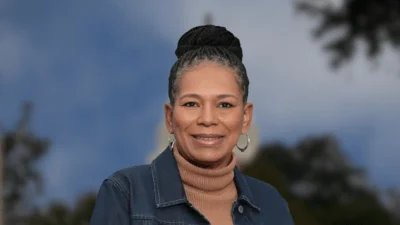City of Wheaton City Council Met Feb. 22.
Here is the minutes provided by the council:
1. Call to Order
The Wheaton City Council Planning Session was called to order at 7:00 p.m. by Mayor Suess. The following were:
Physically Present: Mayor Suess
Councilwoman Bray-Parker
Councilwoman Fitch
Councilwoman Robbins
Councilman Rutledge
Councilman Zaruba
Councilman Barbier
City Staff Physically Present: Michael Dzugan, City Manager
John Duguay, Assistant City Manager
Susan Bishel, Public Information Officer
Joseph Tebrugge, Director of Engineering
City Staff Present by Video Conference: Daniel Peck, Public Relations Coordinator
2. Approval of January 25, 2020 Minutes
The Council requested that the term “interest rate” be revised to the term of “actuarial established rate of return” within Item 4: Analysis of Future Funding of Police and Fire Pension Liabilities.
3. Public Comment
Jean Leidinger, 624 E. Elm St., stated that her property is one of the worst affected properties located within the Pershing East Flood Study area. She discussed the difficulties and damages incurred during flooding events and the actions taken to reduce and mitigate flood damage to her property. Ms. Leidinger stated she has been following the City’s previous discussions and agenda packet for this discussion. She discussed how she did not believe that floodproofing would be a viable solution for her property and noted that the costs associated with elevating a structure presented by the consultant seem high and perhaps should be reevaluated. Ms. Leidinger also stated that the buyout option would work and also perhaps allow stormwater to runoff from neighboring properties better.
4. Flood Resiliency Investigation Part 4
City Manager Dzugan stated that Director of Engineering Tebrugge would be presenting Part 4 of the City’s Flood Resiliency Investigation. He stated Part 4 would focus on a Stormwater Decision Framework developed by City staff that will help identify stormwater solutions for residents affected by overland flooding using qualifying requirements to evaluate eligibility for potential City programs.
Director Tebrugge reviewed the City’s previous Flood Resiliency Investigation presentations. Part 1 explained the cause of overland flooding in Wheaton and where overland flooding is regionalized in
FEBRUARY 22, 2021 CITY COUNCIL PLANNING SESSION MINUTES
floodplain, flood prone, and site-specific areas. Part 2explored ways of increasing flood resiliency and the preliminary development of a Flood Protection Program that would include buyouts, floodproofing, and potential Capital Improvement Projects. Part 3 identified potential grant funding options and the floodproofing process of structure elevation.
Director Tebrugge provided an overview of a Decision Solution Framework. He stated that a Decision Solution Framework would be necessary because of the multiple types of overland flooding (floodplain, flood prone, and site-specific) and numerous solutions to address different issues. He stated that another reason the Decision Solution Framework would be needed is the presence of a Cyclical Analysis Problem where specific prior decisions need to be made to evaluate the final cost of the program, the possibility of grant funding, the ability to complete Capital Improvement Projects, and the overall storm frequency basis of the program.
In response to questions from Council, Director Tebrugge stated that floodplain areas are easily defined because there is a floodplain map provided by the federal government. The flood prone areas are defined by the City through previous studies, and site-specific properties are identified through the City’s drainage review program. He stated that buy-outs are not applicable to site-specific flood areas, as the issues can primarily be addressed through regrading or other less costly solutions specific to that site. He stated that the overall number of site-specific properties could increase once a program is initiated, but the cost of addressing those areas should not be a significant expense.
Director Tebrugge presented the Decision Solution Framework for the floodplain areas. He stated that the floodplain areas are limited to buyout and floodproofing because there are no Capital Improvement Projects that can address the high amount of water that affects the areas.
Director Tebrugge presented the Decision Solution Framework for the flood prone areas. He provided an overview of the Williston Basin Flood Study area and stated that it would require approximately $4.2 million for a Buyout/Floodproofing Program and approximately $10 million for a Capital Improvement Project to address a 100-year storm with no grant possibilities available. He provided an overview of the Pershing East Flood Study area and stated that it would require approximately $3.1 million for a Buyout/Floodproofing Program and approximately $3.6 million for a Capital Improvement Project to address a 100-year storm with a low possibility of an awarded grant to decrease the Capital Improvement Project Cost to $910,560. He provided an overview of Harrison/Cherry Flood Study areas and stated that it would require approximately $9.4 million for a Buyout/Floodproofing Program and approximately $6.8 million for a Capital Improvement Project to address a 100-year storm with the possibility of an awarded grant to decrease the Capital Improvement Project Cost to $1.7 million.
In response to questions from Council, Director Tebrugge stated that none of the presented projects will have a downstream impact on other properties.
In response to questions from Council, Director Tebrugge stated that there are storms sewers located throughout the Pershing East Flood Study area. He stated that the localized storm sewers within the region naturally create depressional areas to get water to flow downhill to the storm sewers, however the existing overflow elevation of the depressions are higher than some structures creating flooding into the structures. A Capital Improvement Project would reconstruct the street to lower the overflow elevations along the street to lower the elevation of the flooding to be lower than the structures.
FEBRUARY 22, 2021 CITY COUNCIL PLANNING SESSION MINUTES
In response to questions from Council, Director Tebrugge stated that the Harrison/Cherry Flood Study areas would require private partnership cooperation to pursue a Capital Improvement Project to address the overland flooding issues in the region. He stated that if the City failed to achieve the necessary full cooperation from private property owners for a specific Capital Improvement Project, the City could proceed with a full Buyout/Floodproofing Program option for the area or pursue a Capital Improvement Project that addresses flooding events less than a 100-year storm.
City Manager Dzugan stated that the Capital Improvement Project options are meant to potentially fully displace storm water away from properties, whereas the Buyout/Floodproofing options will only potentially alleviate houses from the storm water but other pieces of private property (e.g., vehicles, sheds, garages, etc.) would still be affected by storm water.
Director Tebrugge presented the Decision Solution Framework for the site-specific areas.
Director Tebrugge presented the Cyclical Analysis Problem of the total cost of the program. He stated that the total cost of the program hinges on whether a structure has overland flooding that occurs over the top of the foundation or not. Structures that have overland flooding occurring over the top of the foundation would be eligible for a buy-out with the costs presented being evaluated based on the Milton Township assessment. Structures that do not have overland flooding occurring over the top of the foundation would be eligible for floodproofing with an estimate cost of $10,000 per property. He stated through buyouts, floodproofing, and Capital Improvement Projects the total program cost estimate to address the floodplain, flood prone, and site-specific areas based on the current projected decision solution framework would cost approximately $49 million.
In response to questions from Council, Director Tebrugge stated that if a 100-year storm Capital Improvement Project cannot be achieved within an area and the floodproofing/buy-out option was not favored, then additional pre-engineering would be needed to see if a lower storm level of flood protection could be achieved. He stated that the 100-year storm is the industry standard for investigation and design that is frequently used to establish a flood protection program.
In response to questions from Council, Director Tebrugge stated that the cost analysis for lower storm level flood protection plans using Capital Improvement Projects cannot be calculated without pre-engineering. He stated a cost analysis can be provided for floodproofing/buy-outs, as the costs associated with those options are fixed estimates based on property assessment and floodproofing project costs.
Director Tebrugge presented the Cyclical Analysis Problem of the possibility of grants. He stated that with the addition of grants the total program cost to address the floodplain, flood prone, and site-specific areas would be lowered to approximately $37 million.
In response to questions from Council, Director Tebrugge stated that the projects selected for grant eligibility are based on the potential project’s overall Benefit Cost Analysis (BCA).
Director Tebrugge presented the Cyclical Analysis Problem of the ability to complete Capital Improvement Projects. He stated that this portion cannot be completed yet, as private partnerships would be required and resident meetings have not been held. He stated that because the fixed pricing of buyouts and floodproofing is already known, then a cost can be estimated if all Capital Improvement Projects were unable to be completed. He stated that if Capital Improvement Projects could not be completed, then the cost to develop a program based on the 100-year storm would increase by approximately $5 million, a 50-
FEBRUARY 22, 2021 CITY COUNCIL PLANNING SESSION MINUTES
year storm would increase by approximately $800,000 and a 25-year storm would increase by approximately $800,000.
Director Tebrugge presented the Cyclical Analysis Problem of the storm frequency of the program and the total program cost estimates for each storm frequency level from a 2-year storm to a 100-year storm. He stated that if a lower storm frequency deviation is chosen to base the program on, then the program would be less expensive because it would have many less homes included in the program. Also if a lower frequency storm was chosen then the cost effective solution shifts greatly towards a Buyout/Floodproofing program and away from a CIP Program.
Director Tebrugge discussed the next steps of the Flood Resiliency Investigation, which include identifying the storm frequency of the Flood Protection Program, evaluate the ancillary benefits of pursuing Capital Improvement Projects, and evaluating how the City will fund the Flood Protection Program.
The Council thanked staff for their continued work on the project.
The Council expressed gratitude for Ms. Leidinger’s prior public comment.
5. City Council/City Staff Comments
Mayor Suess discussed snow removal in commercial property areas and asked the Council to consider a potential ordinance that would require commercial property owners to clear sidewalks abutting their property immediately following snow events.
6. Adjournment
The meeting was adjourned at 8:28 p.m.
https://www.wheaton.il.us/AgendaCenter/ViewFile/Minutes/_02222021-1588






 Alerts Sign-up
Alerts Sign-up